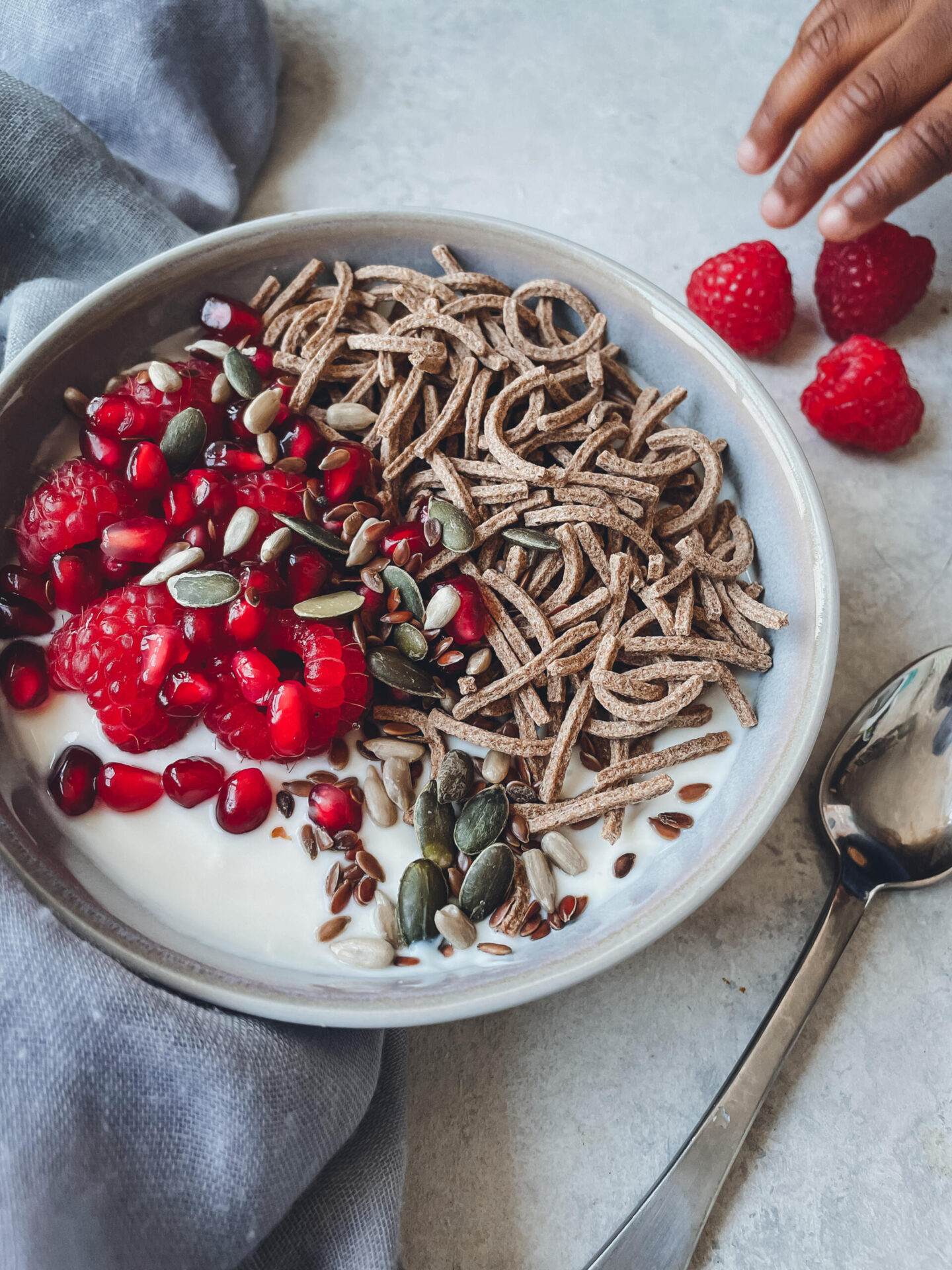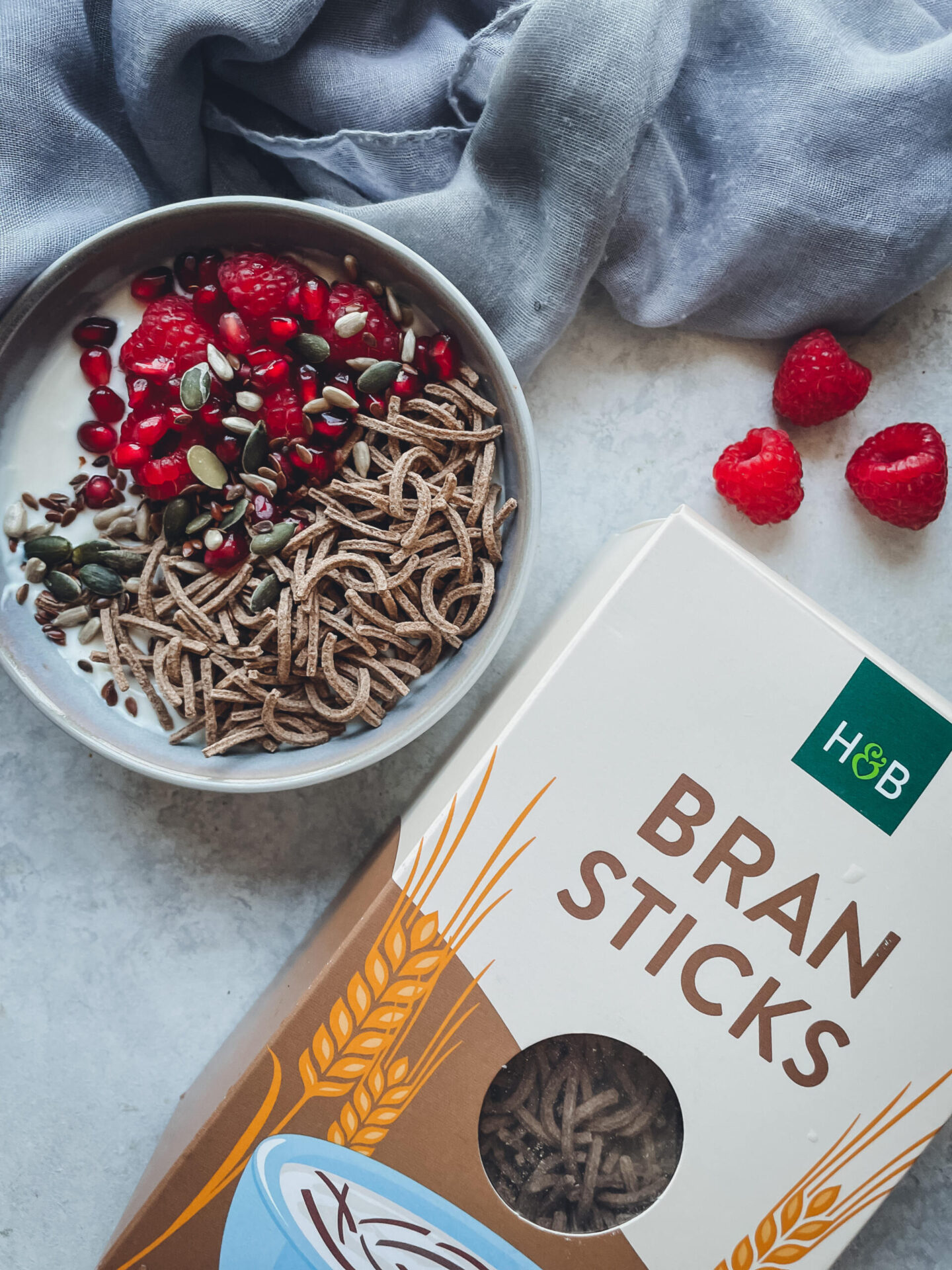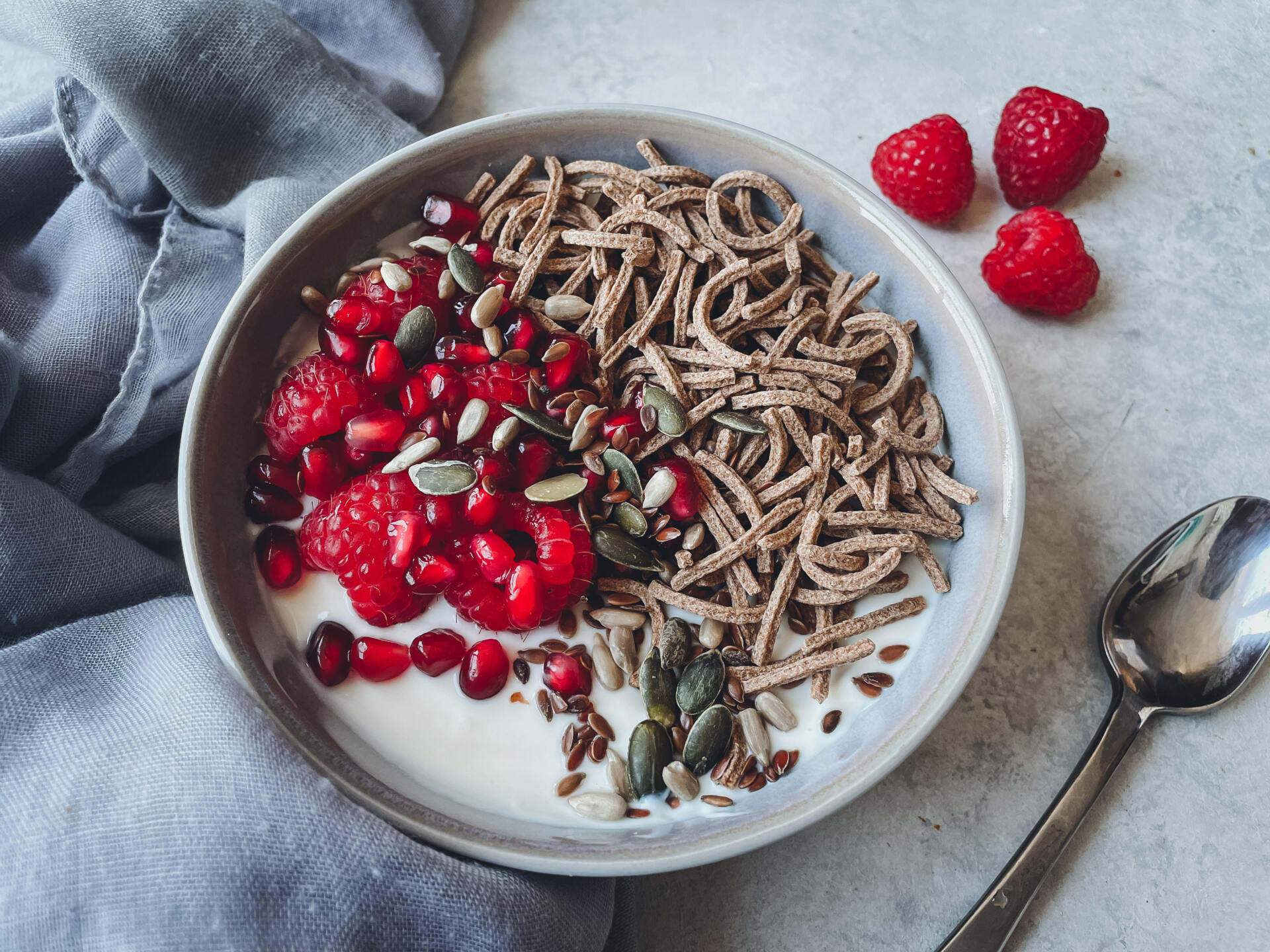
Bran Sticks – A low-sugar, diabetes-friendly breakfast cereal
Enjoy cereal for breakfast, but want a low-sugar, diabetes-friendly alternative? Bran sticks may be just what you need!
Not sure what they are? Let me fill you in real quick!
Bran sticks are crispy toasted pieces of wheat shaped like matchsticks. They look just like All-Bran cereal but taste very different. Unlike All-Bran, bran sticks are sugar-free, making them more suitable for people with diabetes or those who prefer a low added sugar diet.
This article discusses Bran sticks and includes a simple breakfast recipe.
The Nutritional Benefits of Bran Sticks
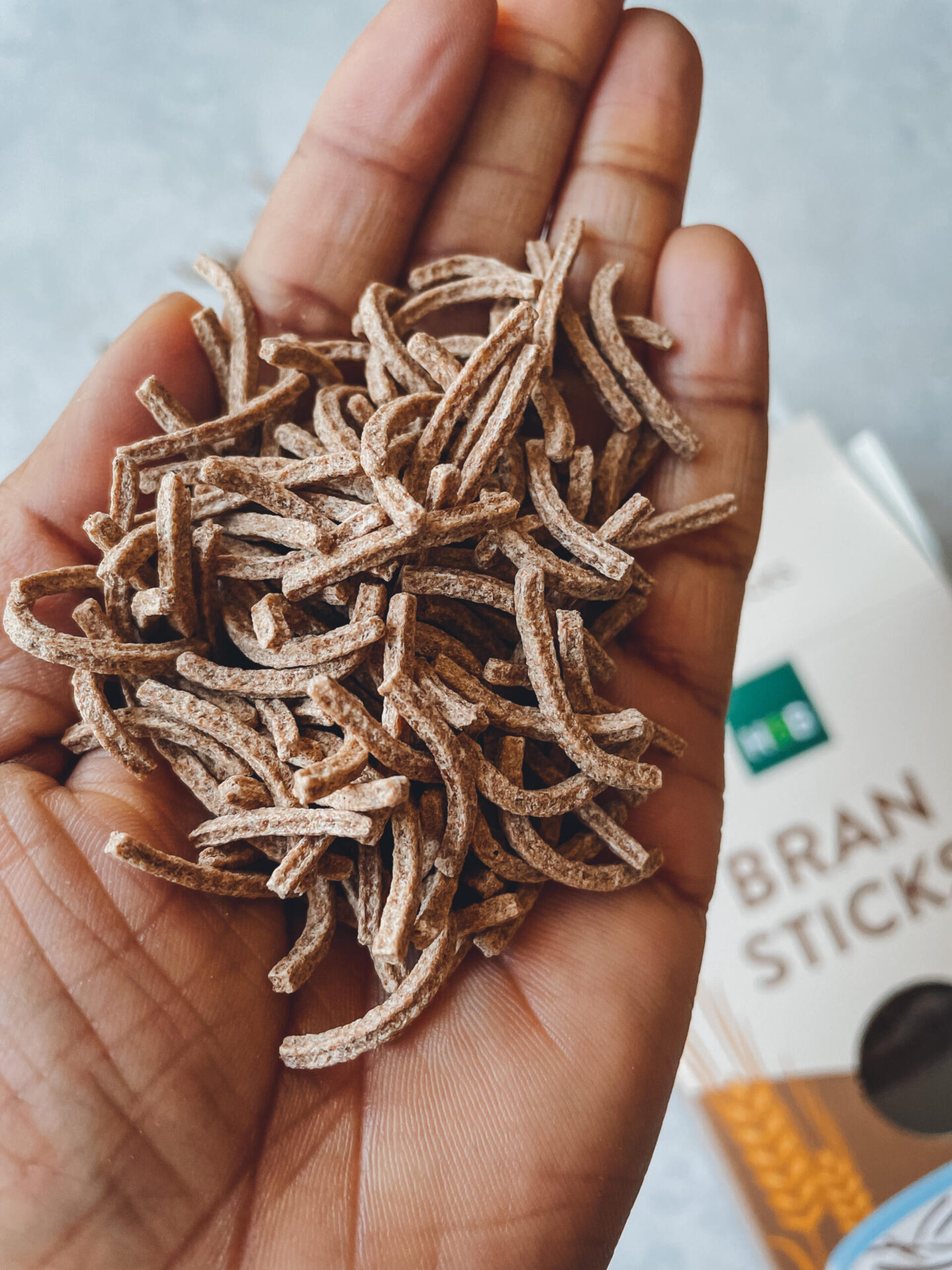
I’m not a huge cereal fan, but I eat them occasionally.
I usually make granola and muesli when I want cereal, but sometimes I eat bran flakes, Weetabix, or All bran. Although these cereals contain less sugar than most, they still have a reasonable amount of sugar, making them easy to overeat and unsuitable for people with blood sugar imbalances.
Moreover, while we now know it is unnecessary to cut carbohydrates from the diet to maintain health, prevent diabetes or put prediabetes and type 2 diabetes into remission, eating high-quality carbohydrates is still vital.
High-quality carbohydrates are unrefined carbohydrates that contain the bran, endosperm and germ layer. After processing, they retain most of their vitamins and minerals and are rich in fibre.
Fibre is vital for anyone eating a carbohydrate-rich diet because besides promoting gut and heart health, it regulates blood sugar levels. It does this by slowing glucose absorption from food, preventing glucose and insulin spikes (McRae, 2018), a beneficial attribute for people with prediabetes and diabetes.
Fibre also promotes satiety.
Bran sticks are an excellent high-quality carbohydrate. Although they’re processed, they’re made from wholegrain wheat and retain the fibre-rich bran layer. Depending on which brand you choose, they may also contain barley flour for its malt flavour.
A 40g serving of bran sticks (from Holland & Barrett’s) contains a whopping 17g of fibre – over 50% of the recommended daily fibre intake for adults in the United Kingdom (Evans, 2020).
In comparison, Kellogg’s All bran contains 11g per serving while bran flakes have 5.6g.
Nutritional Information for Bran Sticks
| Typical Values | Per 100g | Per serving (40g) |
| Energy | 1249kJ / 297kcal | 500kJ / 119 kcal |
| Fat | 4.5g | 1.8g |
| of which saturates | 0.7g | 0.3g |
| Carbohydrates | 21g | 8.4g |
| Of which sugars | 4.7g | 1.9g |
| Fibre | 41g | 17g |
| Protein | 16g | 6.4g |
| Salt | 0.03g | 0.01g |
These bran sticks are made from wheat bran (81%) and barley malt flour (19%) meaning they’re completely free of added sugars. Even if you decide to snack on them alone, they’re unlikely to spike insulin or blood glucose because of their low sugar, high-fibre content, and naturally balanced macronutrient profile.
A 40g serving of wheat bran has an estimated glycaemic load of 5.3, which is low (Nutritics, 2019).
Some points to consider
Bran sticks are not fortified with vitamins and minerals, such as folic acid, vitamin D, iron, and vitamin B12 like other commercial cereals. That could be a negative if you rely on cereal to boost your intake of these micronutrients.
However, if you eat a healthy, balanced diet or take a multivitamin supplement, this shouldn’t be a deal-breaker.
Another con about this cereal is that it is bland. If you’re used to eating sugar-sweetened cereals, you may dislike bran sticks initially. Pairing them with fresh fruit, milk or yoghurt boosts the flavour dramatically. A small drizzle of honey wouldn’t hurt if you’re desperate, but stevia or another natural sweetener might be more suitable to keep the sugar content low.
Finally, as bran is made from wheat, it is unsuitable for people with gluten intolerances or coeliac disease.
A simple breakfast recipe with bran sticks
I purchased my bran sticks from Holland & Barret, but you can get them from Whole Foods Online or Amazon.
The instructions for use on the packaging state, “simply serve with your favourite milk or yoghurt. For an extra flavour boost, why not try adding a handful of dried fruit and a drizzle of honey?’’
I skipped dried fruit and honey (high-glycaemic) and served mine with fresh raspberries, pomegranate seeds, mixed seeds, and yoghurt. I added mixed seeds to boost the meal’s fat content and nutritional profile.
It was a simple, tasty and satisfying breakfast! I remained full for four hours at least.
This recipe has an estimated glycaemic index (GI) of 37.1 and glycaemic load (GL) of 6.6, and is thus a low-GI or low-GL meal. It is a rich source of several vitamins and minerals, including:
- Manganese, provides 3.1 mg or 153% of the daily recommended nutrient intake (RNI)
- Phosphorus, providing 656 mg or 94% of the daily RNI
- Iron, provides 5.2 mg or 37% of the daily RNI for women
- Zinc, provides 3.4 mg or 34% of thedaily RNI
- Biotin, provides 14.8 mcg or 30% of daily RNI
To make this, you’ll need
- 40g bran sticks
- 1 tablespoon pomegranate seeds
- 50g fresh raspberries
- 150g plain yoghurt ( I use soya)
- 1 tablespoon mixed toasted seeds
Instructions
Put the yoghurt in a medium bowl. Top with bran sticks, raspberries, and pomegranate seeds. Sprinkle with mixed seeds and enjoy!
You can also eat bran sticks with warm milk and enjoy it as porridge if you prefer.
Print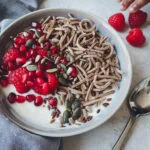
Bran Sticks – A low-sugar, diabetes-friendly breakfast cereal
- Prep Time: 5 mins
- Total Time: 5 minutes
- Yield: Serves 1
- Category: Breakfast
- Diet: Diabetic
Description
Low-sugar, diabetes-friendly breakfast cereal with fresh fruit and yoghurt
Ingredients
- 40g bran sticks
- 1 tablespoon pomegranate seeds
- 50g fresh raspberries
- 150g plain yoghurt ( I use soya)
- 1 tablespoon mixed toasted seeds
Instructions
Put the yoghurt in a medium bowl. Top with bran sticks, raspberries, and pomegranate seeds. Sprinkle with mixed seeds and enjoy!
Notes
You can also eat bran sticks with warm milk and enjoy it as porridge if you prefer.
Nutrition
- Serving Size: Serves 1
- Calories: 274
- Sugar: 8.8g
- Sodium: 155mg
- Fat: 11g
- Saturated Fat: 1.7g
- Unsaturated Fat: 7.7g
- Trans Fat: 0.01g
- Carbohydrates: 18g
- Fiber: 22g
- Protein: 15.2g
- Cholesterol: 0mg
Have you tried bran sticks?
REFERENCES
- McRae, M.P (2018) Dietary fibre intake and type 2 diabetes mellitus: An umbrella review of meta-analyses. J Chiropractic Medicine, 17(1): 44-53.
- Evans, C.E.L (2020) Dietary fibre and cardiovascular health: a review of current evidence and policy. Proceedings of the Nutrition Society, 79, 61-67.
- Nutritics. (2019). Research (v5.09) [Computer software]. Dublin. Retrieved from: https://ww.nutritics.com.
